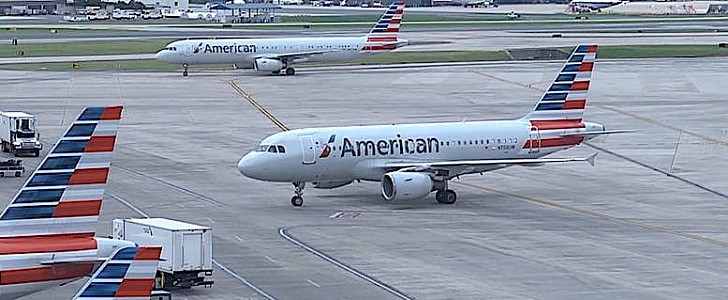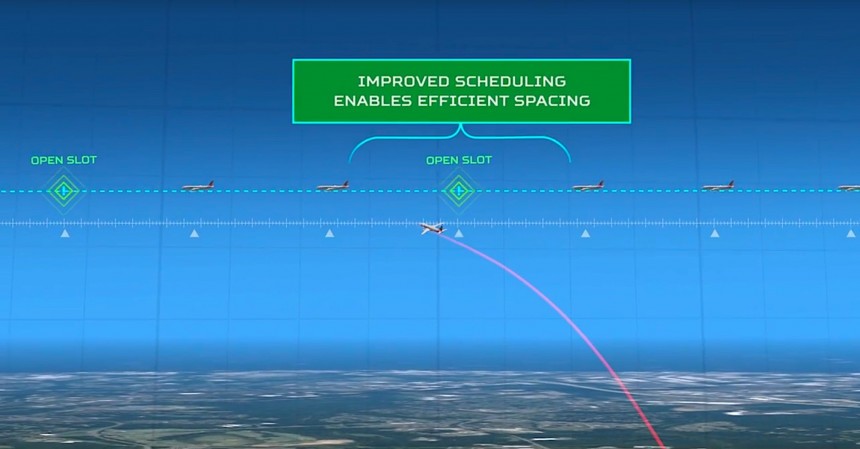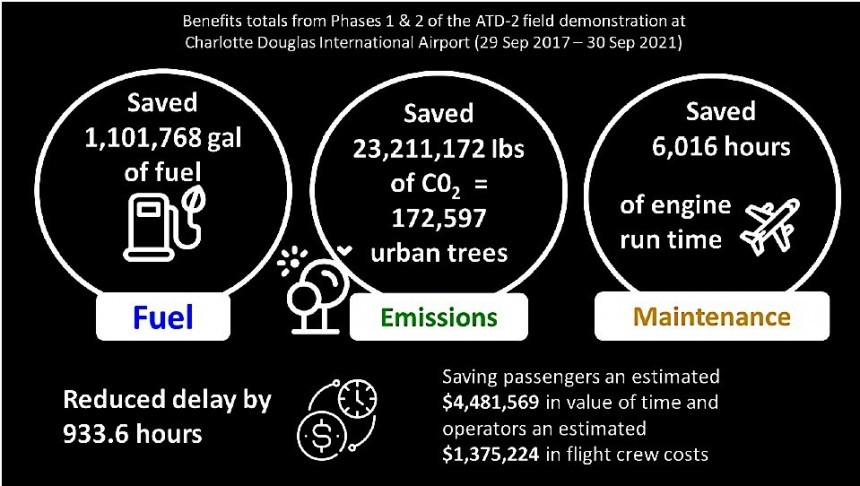Fast and safe as it may be, air travel is a hell of a hassle. People have to show up hours in advance and wait inside airports, and most of the time they end up waiting some more once on the plane, as the winged beasts get in line to take off. Because of that, more often than not, a two-hour flight is often accompanied by an even longer period waiting, checking in, and generally wasting time.
While passengers and airplanes wait, airlines are losing money through burnt fuel, and the world loses a bit of its shine as more harmful gasses are thrown into the atmosphere. Fast and safe, but by no means effective, the aviation industry is.
There are a lot of factors contributing to this reality, and chances are we’ll never be able to tackle them all. But there are some things we can improve upon. Like, say, air traffic management.
As things stand at airports today, separate groups of people have to comb through immense amounts of data concerning arrivals, departures, surface traffic, delays, and changes in weather. While combing, they must also track and communicate them, but also adjuste strategies for safe operations.
Separately, once an airplane is ready for departure, it gets in line on the runway, waiting for its turn to take off, engines running. Ideally, the groups of people we talked about above should be able to keep things in check and allow departure at the scheduled time, but as reality keeps proving, that’s an almost impossible task, as planes get delayed (sometime, the delay is included in the scheduled flight time as a buffer).
Additionally, airport traffic management is handled by separate systems for arrivals, departures, and surface traffic. And that’s highly ineffective as well.
For a while now, NASA (yes, the NASA) and the Federal Aviation Administration (FAA) have been trying to come up with something that could help with all that. A solution that not only will allow better scheduling of arrivals and departures, thus helping cut fuel consumption, but also help passengers not waste their time waiting.
The joint research project is called Airspace Technology Demonstration 2 (ATD-2), and the solution Integrated Arrival, Departure, and Surface Operations (IADS). In a nutshell, we’re talking about a software that can “predict airport traffic conditions and determine the best time for departing flights to push back from the gate.”
Bringing together all phases of flight (arrival, departure, surface traffic), the system gets its data from both the FAA and the airlines, and shares it with interested parties.
Using that data, it is capable of creating a virtual queue of airplanes, allowing for wait times to be spent at the gate, with the engines off. Only when it’s close to the departure time, pilots are instructed to proceed to the runway.
It sounds so simple it kind of makes you wonder how comes this thing was not implemented before. No matter the reason, it should forever change the experience for millions of passengers, and save airlines billions in the long run.
Back in 2017, NASA started a test of the IADS at Charlotte-Douglas International Airport in North Carolina. By September 2021, it ended up saving one million gallons of jet fuel by not allowing the planes to run their engines at idle unnecessarily. This saved airlines $1.4 million in-flight crew costs, while passengers were prevented from throwing out the window 933 hours in flight delays.
It was last September when the system was transferred to the FAA. The agency plans to start rolling it out at 27 airports across America from 2023.
The IADS is not the only flight-related tech being developed by NASA. ATD-1 was devised to look into new ground-based and flight deck technologies that could help save fuel throughout the entire arrival phase of flight.
Separately, ATD-3 is looking at way to provide “pilots and air traffic managers with options for adjusting aircraft flight paths based on real-time input including wind and weather conditions and other air traffic.”
There is no word yet on when these other two will be ready.
There are a lot of factors contributing to this reality, and chances are we’ll never be able to tackle them all. But there are some things we can improve upon. Like, say, air traffic management.
As things stand at airports today, separate groups of people have to comb through immense amounts of data concerning arrivals, departures, surface traffic, delays, and changes in weather. While combing, they must also track and communicate them, but also adjuste strategies for safe operations.
Separately, once an airplane is ready for departure, it gets in line on the runway, waiting for its turn to take off, engines running. Ideally, the groups of people we talked about above should be able to keep things in check and allow departure at the scheduled time, but as reality keeps proving, that’s an almost impossible task, as planes get delayed (sometime, the delay is included in the scheduled flight time as a buffer).
Additionally, airport traffic management is handled by separate systems for arrivals, departures, and surface traffic. And that’s highly ineffective as well.
The joint research project is called Airspace Technology Demonstration 2 (ATD-2), and the solution Integrated Arrival, Departure, and Surface Operations (IADS). In a nutshell, we’re talking about a software that can “predict airport traffic conditions and determine the best time for departing flights to push back from the gate.”
Bringing together all phases of flight (arrival, departure, surface traffic), the system gets its data from both the FAA and the airlines, and shares it with interested parties.
Using that data, it is capable of creating a virtual queue of airplanes, allowing for wait times to be spent at the gate, with the engines off. Only when it’s close to the departure time, pilots are instructed to proceed to the runway.
It sounds so simple it kind of makes you wonder how comes this thing was not implemented before. No matter the reason, it should forever change the experience for millions of passengers, and save airlines billions in the long run.
It was last September when the system was transferred to the FAA. The agency plans to start rolling it out at 27 airports across America from 2023.
The IADS is not the only flight-related tech being developed by NASA. ATD-1 was devised to look into new ground-based and flight deck technologies that could help save fuel throughout the entire arrival phase of flight.
Separately, ATD-3 is looking at way to provide “pilots and air traffic managers with options for adjusting aircraft flight paths based on real-time input including wind and weather conditions and other air traffic.”
There is no word yet on when these other two will be ready.







